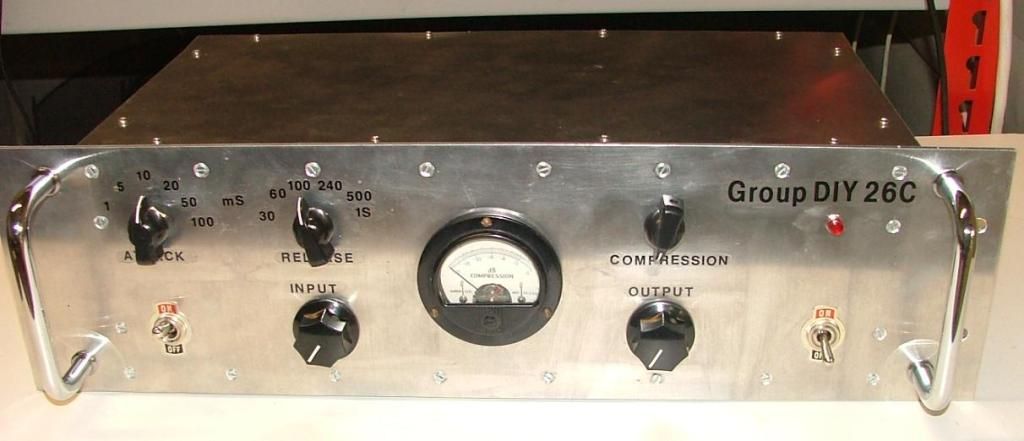Sorry for the delay folks, it's been balls to the wall around here. Lassoharp and I spent the better part of a day listening and evaluating, after I'd already listened and run some preliminary tests.
The unit spent 3 days with Mitch Easter who said "It's really good!" He tracked bass, banjo, and drum room mic with it, and found all the control ranges agreeable.
Thanks for the schematic updates Dave, they look correct.
What's interesting about hum with regard to early pro audio designs is the mechanical approach taken. At the beginning of the 1930's it was customary to run everything off of batteries, and later from large centralized rectifier units. By the mid '30's, AC rectification stages in program amps became normal but the power transformer was frequently an external piece of equipment. Preamp B+ was generally taken from taps on the program amp, and filament from batteries or distant external filament transformers. Manuals of the age warn about keeping power transformers at least 3 feet away from low level audio transformers and circuits, and this with incredibly heavily shielded parts. The Collins 26C uses an external power transformer as was custom, along with 2 stages of LC filtering in the amp. This makes for a dead quiet AC noise floor, but is clearly impractical from a modern view. In those days pro audio was an industrial pursuit, with industrial level facility build-outs.
My next exploration will be to remove the inductor based 32kHz trap and evaluate, also to see about fitting it earlier in circuit at higher level as pre-emphasis. The hum pickup is undoubtably related to the operating level where it it fitted, the lowest of the entire amp and therefore most susceptible to interference and amplification.
The compression quality is really extraordinary, particularly the release. Piano and bass release can be very fast, smooth, and clean sounding, which is a strong 'quality challenge' for a lot of comps. It is super effective for single source compression, release smoothness and speed is really the hallmark of this and the Collins. I think I would personally shy away from use on kick or snare, but it does sound good on a drum submix or room mic. You can push 10+ dB on a high tempo mix with fully silent breaks and watch it fall almost immediately to 0 GR and right back to 10 dB GR as the break passes, not a bit of pumping or artifacts as found in the typical vari-mu.
Actually it's an Edcor WSM600/10K that I put up front. I found that with slower attacks and faster releases there was not enough gain available in the side chain to push much gain reduction. It feels better with the transformer boost, and it also tamed a bit of the frequency response extremities, top and bottom, for the better. I tried a 500:50K at one point, and it was really too much input gain for typical levels here. A 600:10K provides enough input gain that one can overload the input stage, much like the original Collins. After the mod I found with the Audio Precision THD+N test that I could get into high levels of THD (9%) with the input knob below noon, when fed a hot signal, and the input clipping was nowhere near as apparent as the measurement would suggest.
The sweet spot so far really seems to be compression in the 6 dB range. There is a gentle top end boost under gain reduction, that increases with more compression. This concerned me at first, but it always stayed smooth, even with a small DPA condenser inside a piano being beaten to death on a rock tune.
I'll sign off now and see about getting some plots posted next.



























![Soldering Iron Kit, 120W LED Digital Advanced Solder Iron Soldering Gun kit, 110V Welding Tools, Smart Temperature Control [356℉-932℉], Extra 5pcs Tips, Auto Sleep, Temp Calibration, Orange](https://m.media-amazon.com/images/I/51sFKu9SdeL._SL500_.jpg)











